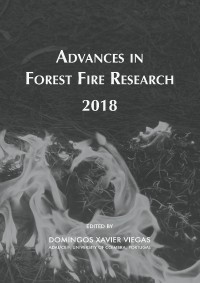Please use this identifier to cite or link to this item:
https://hdl.handle.net/10316.2/44611| Title: | The large fire of Pedrógão Grande (Portugal) and its impact on structures | Authors: | Ribeiro, Luís Mário Rodrigues, André Lucas, Davi Viegas, Domingos Xavier |
Keywords: | WUI;impact on structures;large fire | Issue Date: | 2018 | Publisher: | Imprensa da Universidade de Coimbra | Journal: | http://hdl.handle.net/10316.2/44517 | Abstract: | The fire complex that began on 17/6/2017, in Central Portugal, will be for always remembered, not only because of the extensive burned area, but mainly because it caused 65 deaths, more than 200 injured and destroyed hundreds of structures, making it one of the most serious accidents in the country, and one of the worst in Europe. The Forest Fire Research Centre of ADAI (University of Coimbra, PT) performed a detailed analysis and report on this fire complex focused on aspects related to the fire spread and behaviour, the mortal accidents and the fire impact on local communities. The work presented here is related to the latter, i.e., the destruction of property. The greatest impact was observed in the municipalities of Pedrógão Grande, Castanheira de Pera and Figueiró dos Vinhos, where the deaths occurred and where most of the damaged structures were located. This component of structural damage was the subject of an intensive fieldwork, during which we inventoried several aspects related to fire behavior, the structures and their surroundings. During the field work, 1043 structures damaged by fire were identified. They are mostly support structures, such as barracks or storage (38.6%), but there is a considerable number of damaged dwellings, either permanent (13.3%) or temporary (11.9%). One of the most important aspects of the study relates to the type and location of structural ignition. More than 60% of the structures have been ignited due to the deposition of incandescent particles (firebrands) in different weak points. Likewise, more than 60% of these ignitions occurred on the roofs, mainly because of the vulnerability associated to the structures and materials supporting them. Another relevant factor is the observation of the advanced age of most buildings affected (over 30 years), which may indicate less resistance to the passage of a fire. Nevertheless, and for the Portuguese reality, we can say that buildings are generally safe during the passage of a fire, if themselves and their surroundings are kept in good conditions. The fact that there are people inside can be essential in their defense and resistance to the passage of fire. This paper presents the main results of the assessment of the fire impact on structures, part of a larger work on the Fire Complex of Pedrógão Grande and neighboring municipalities. | URI: | https://hdl.handle.net/10316.2/44611 | ISBN: | 978-989-26-16-506 (PDF) | DOI: | 10.14195/978-989-26-16-506_94 | Rights: | open access |
| Appears in Collections: | Advances in forest fire research 2018 |
Files in This Item:
| File | Description | Size | Format | |
|---|---|---|---|---|
| the_large_fire_of_pedrogao_grande.pdf | 1.09 MB | Adobe PDF |  |
Items in DSpace are protected by copyright, with all rights reserved, unless otherwise indicated.
